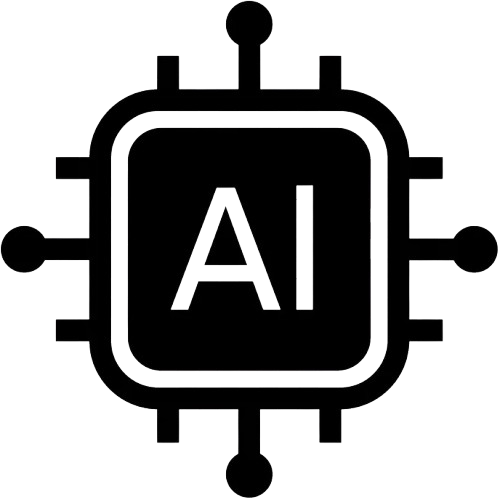Your cart is currently empty!
Written by Riyan Sharma {15|09|2023}
India’s New Education Policy 2023
India’s New Education Policy 2023
India’s 2023 Education Policy heralds a new era in education, focusing on holistic learning, multilingualism, teacher empowerment, innovation, and inclusivity. Let’s explore the key features shaping the future of education in India.

The National Education Policy (NEP) 2023, replacing the 34-year-old National Policy of Education (1986), introduces significant changes:
1. Restructuring the school curriculum from the 10+2 model to a 5+3+3+4 structure, comprising the Foundational, Preparatory, Middle, and Secondary stages.
2. Emphasis on Early Childhood Care and Education (ECCE).
3. Commencement of vocational education from 6th grade, including internships.
4. Elimination of stream-based separation, allowing students to choose subjects across disciplines.
5. Reforms in board exams, with exams conducted twice a year.
6. Introduction of the National Curriculum Framework (NCF) for children aged 3 to 18.
7. Focus on language diversity.
8. Promotion of holistic education, ensuring access to education for all, including the marginalized.
The highlights of the new NEP 2023 are as follows:
✔️Extended Schooling Period – Mandatory schooling from ages 3 to 18, including three years of pre-schooling for children aged 3-6, with a shift to a 5+3+3+4 curricular structure.
✔️Medium of Instruction – Emphasis on native languages for teaching, advocating the use of mother tongue until at least Grade 5 and preferably until Grade 8, while promoting multilingualism.
✔️Higher Education Reforms – Introduction of the Higher Education Commission of India (HECI) to oversee higher education reforms, aiming to phase out college affiliations in 15 years and provide autonomy to colleges.
✔️The blurring of Subject Distinctions – Removal of formal distinctions between subjects, allowing students to choose from various disciplines, with vocational education starting from grade 6.
✔️The blurring of Subject Distinctions – Removal of formal distinctions between subjects, allowing students to choose from various disciplines, with vocational education starting from grade 6.
✔️Flexible Undergraduate Degrees – Implementation of flexible undergraduate degrees with multiple exit options and an Academic Bank of Credit for credit transferability.
✔️Universal Access to School Education – Focus on universal access to education, holistic development, and progress tracking for students, integrating vocational education and support services like counsellors.
✔️Foundational Literacy and Numeracy (FLN) – Targeting foundational literacy and numeracy (FLN) from Grade 3 by 2025.
✔️Experiential Learning – Promotion of experiential learning, critical thinking, and reduced course content, with vocational education and internships introduced in grades 6-8.
✔️Increase in Graduate Enrollment Ratio – Aim to increase graduate enrollment ratio to 50% by 2035 with measures to reduce dropout rates.
✔️Enhancement of Open and Distance Learning – Enhancement of open and distance learning standards with the introduction of online courses and recognition of MOOCs.
✔️Technological Innovation – Proposal for the establishment of the National Educational Technology Forum (NETF) to promote technological innovation in education.
✔️Internationalization of Education – Encouragement of global collaborations and partnerships with foreign universities for internationalization of education.
✔️Increased Public Investment – Increase in public investment in education to reach 6% of GDP, focusing on enhancing educational infrastructure.
Here’s a timeline showcasing the evolution of the Indian Education System post-independence:

1948: Establishment of the University Education Commission, marking the initiation of educational reforms.
1952: Formation of the Secondary Education Commission to further enhance the education system.
1964–1966: Introduction of the Indian Education Commission, aimed at reviewing and improving the educational landscape.
1968: Introduction of the first National Education Policy, outlining key principles and objectives for educational development.
1986: Formulation of a new education policy, reflecting changing societal needs and educational priorities.
1992: Modification of the previous education policy to adapt to evolving educational challenges and requirements.
2005: Further amendments to the 1986 education policy, incorporating new strategies and initiatives for educational enhancement.
2020: Passage of the new National Education Policy (NEP) by the cabinet, representing a comprehensive overhaul of the education system to align with contemporary needs and global standards.
Conclusion: India s 2023 Education Policy brings about a transformative shift in the study curriculum, embracing innovation, flexibility, and inclusivity. By fostering interdisciplinary learning, skill development, experiential learning, and values-based education, the curriculum aims to empower learners to thrive in the 21st century and contribute positively to society. As India continues its journey towards educational excellence, the implementation of this progressive curriculum holds the promise of shaping a brighter future for generations to come.
Written by Riyan Sharma {15|09|2023}
India’s New Education Policy 2023
India’s New Education Policy 2023
India’s 2023 Education Policy heralds a new era in education, focusing on holistic learning, multilingualism, teacher empowerment, innovation, and inclusivity. Let’s explore the key features shaping the future of education in India.

The National Education Policy (NEP) 2023, replacing the 34-year-old National Policy of Education (1986), introduces significant changes:
1. Restructuring the school curriculum from the 10+2 model to a 5+3+3+4 structure, comprising the Foundational, Preparatory, Middle, and Secondary stages.
2. Emphasis on Early Childhood Care and Education (ECCE).
3. Commencement of vocational education from 6th grade, including internships.
4. Elimination of stream-based separation, allowing students to choose subjects across disciplines.
5. Reforms in board exams, with exams conducted twice a year.
6. Introduction of the National Curriculum Framework (NCF) for children aged 3 to 18.
7. Focus on language diversity.
8. Promotion of holistic education, ensuring access to education for all, including the marginalized.
The highlights of the new NEP 2023 are as follows:
✔️Extended Schooling Period – Mandatory schooling from ages 3 to 18, including three years of pre-schooling for children aged 3-6, with a shift to a 5+3+3+4 curricular structure.
✔️Medium of Instruction – Emphasis on native languages for teaching, advocating the use of mother tongue until at least Grade 5 and preferably until Grade 8, while promoting multilingualism.
✔️Higher Education Reforms – Introduction of the Higher Education Commission of India (HECI) to oversee higher education reforms, aiming to phase out college affiliations in 15 years and provide autonomy to colleges.
✔️The blurring of Subject Distinctions – Removal of formal distinctions between subjects, allowing students to choose from various disciplines, with vocational education starting from grade 6.
✔️The blurring of Subject Distinctions – Removal of formal distinctions between subjects, allowing students to choose from various disciplines, with vocational education starting from grade 6.
✔️Flexible Undergraduate Degrees – Implementation of flexible undergraduate degrees with multiple exit options and an Academic Bank of Credit for credit transferability.
✔️Universal Access to School Education – Focus on universal access to education, holistic development, and progress tracking for students, integrating vocational education and support services like counsellors.
✔️Foundational Literacy and Numeracy (FLN) – Targeting foundational literacy and numeracy (FLN) from Grade 3 by 2025.
✔️Experiential Learning – Promotion of experiential learning, critical thinking, and reduced course content, with vocational education and internships introduced in grades 6-8.
✔️Increase in Graduate Enrollment Ratio – Aim to increase graduate enrollment ratio to 50% by 2035 with measures to reduce dropout rates.
✔️Enhancement of Open and Distance Learning – Enhancement of open and distance learning standards with the introduction of online courses and recognition of MOOCs.
✔️Technological Innovation – Proposal for the establishment of the National Educational Technology Forum (NETF) to promote technological innovation in education.
✔️Internationalization of Education – Encouragement of global collaborations and partnerships with foreign universities for internationalization of education.
✔️Increased Public Investment – Increase in public investment in education to reach 6% of GDP, focusing on enhancing educational infrastructure.
Here’s a timeline showcasing the evolution of the Indian Education System post-independence:

1948: Establishment of the University Education Commission, marking the initiation of educational reforms.
1952: Formation of the Secondary Education Commission to further enhance the education system.
1964–1966: Introduction of the Indian Education Commission, aimed at reviewing and improving the educational landscape.
1968: Introduction of the first National Education Policy, outlining key principles and objectives for educational development.
1986: Formulation of a new education policy, reflecting changing societal needs and educational priorities.
1992: Modification of the previous education policy to adapt to evolving educational challenges and requirements.
2005: Further amendments to the 1986 education policy, incorporating new strategies and initiatives for educational enhancement.
2020: Passage of the new National Education Policy (NEP) by the cabinet, representing a comprehensive overhaul of the education system to align with contemporary needs and global standards.
Conclusion: India s 2023 Education Policy brings about a transformative shift in the study curriculum, embracing innovation, flexibility, and inclusivity. By fostering interdisciplinary learning, skill development, experiential learning, and values-based education, the curriculum aims to empower learners to thrive in the 21st century and contribute positively to society. As India continues its journey towards educational excellence, the implementation of this progressive curriculum holds the promise of shaping a brighter future for generations to come.


Leave a Reply